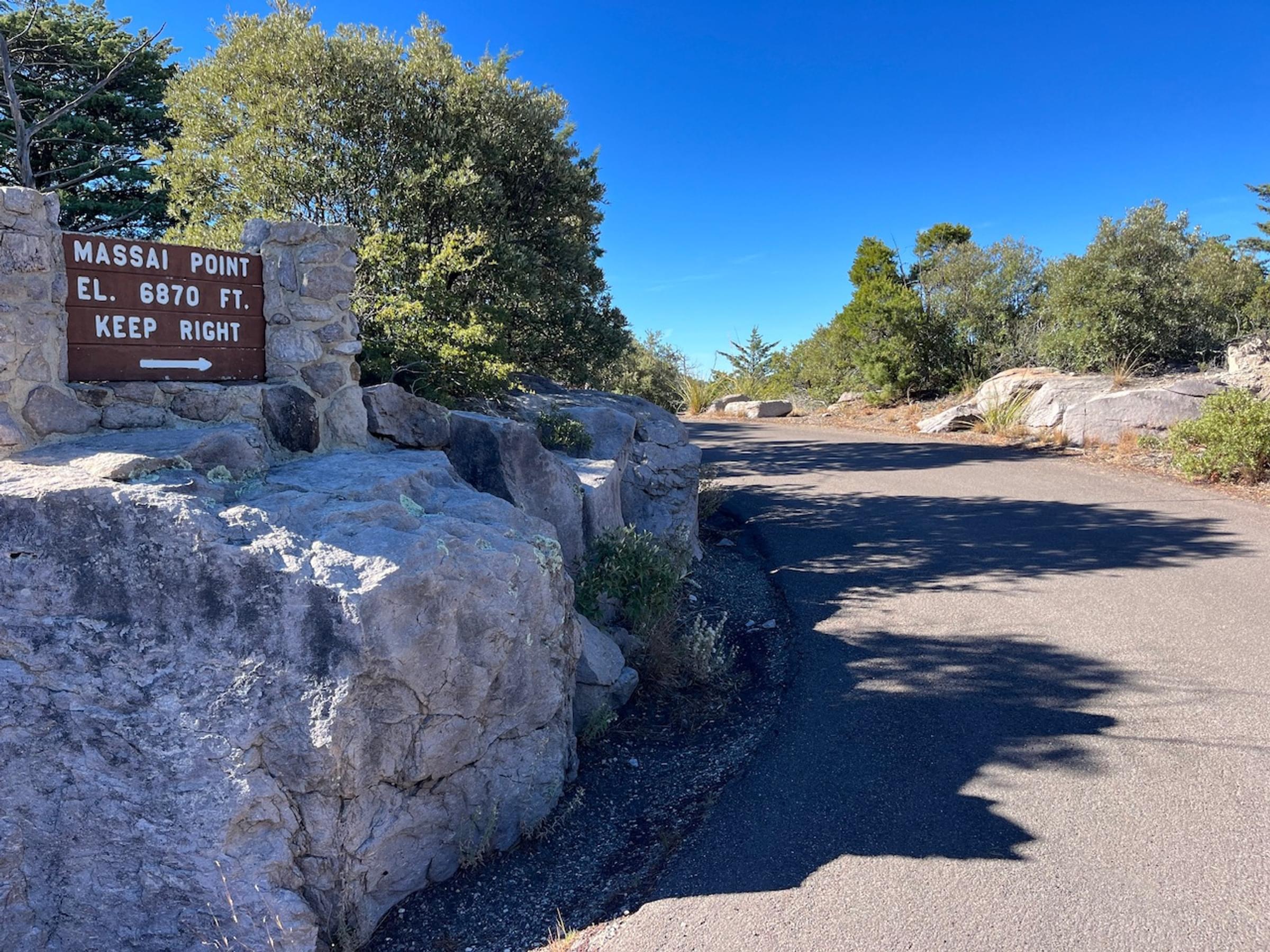Chiricahua NM--Massai Point

Chiricahua NM--Massai Point
Willcox, Arizona 85643
Official WebsiteChiricahua National Monument Official Website
Chiricahua National Monument map
Tips for Birding
Massai Point is one of six location-specific hotspots within Chiricahua National Monument. Use the greater Monument hotspot (https://birdinghotspots.org/hotspot/L128945) when you have a checklist that includes multiple locations.
At this small hotspot, expect your species list to be in single digits. Longer eBird lists, as is obvious from their recorded effort, are typically the result of inappropriate listing of all birds observed on the drive up to the Point or on the hike down from the Point.
Birds of Interest
Among USFWS-designated Birds of Conservation Concern for the Sierra Madre Occidental, Sonora Desert, and Chihuahua Desert regions, the following species have been listed multiple times for the hotspot: Broad-tailed Hummingbird (March-August), Arizona Woodpecker (October-April), Plumbeous Vireo (June-August), Woodhouse’s Scrub Jay (August-April), Mexican Chickadee (September-April), Scott’s Oriole (May-July), and Black-throated Gray Warbler (April-September).
Acorn is the is the most frequently observed woodpecker species, followed by Northern Flicker.
Mexican Jay is the predominant corvid, with Steller’s Jay occasionally listed.
Dark-eyed Junco are observed October-April, with Yellow-eyed noted throughout the year.
White-throated Swift are often reported February-September.
About this Location
Early National Park Service and US Forest Service officials saw Massai Point as a major landscape viewing opportunity, and built a road, as well as trails, to the high plateau.
In 1932, the Forest Service began constructing what they called “Bonita Canyon Highway,” a road that travelled up Bonita Canyon and ended on Massai Plateau (6870 feet/2094 meters). When Chiricahua National Monument shifted from USFS control to the Park Service, Civilian Conservation Corps (CCC) enrolees, who had been working in the monument, levelled a small area of the plateau and cleared it of vegetation for the 1934 dedication ceremony.
Now, because of revegetation efforts, there is no evidence thousands of people converged for the celebration. Speaker’s Rock, built by the CCC, and an observation and exhibit building at the high point of the plateau are all that remain from the dedication ceremony. But Massai Point is still the end of paved Bonita Canyon Drive. More modern benches, picnic tables, and vault toilets are available at a pleasant vegetated area surrounded by the parking area. Beware: unattended snacks are bound to be carried off by voracious Mexican Jays!
About Chiricahua National Monument
See all hotspots at Chiricahua National Monument
A “Wonderland of Rocks” is waiting for you to explore at Chiricahua National Monument. The 8-mile paved scenic drive and 17 miles of day-use hiking trails provide opportunities to discover the beauty, natural sounds, and inhabitants of this 11,985-acre site. Visit the Faraway Ranch Historic District to discover more about the people who have called this area home.
Notable Trails
Except for summer, a free shuttle leaves the Faraway Ranch (https://birdinghotspots.org/hotspot/L2484537) parking lot most mornings at 9:00am, taking hikers to Massai Point, but check at the Visitor Center or the Monument website for the most current schedules.
The half-mile Massai Point Nature Trail winds among manzanita, oak, and a few pines surviving the 2011 Horseshoe Two fire. The trail features vistas of surrounding valleys and mountains. Particularly notable is the view from Speaker’s Rock. Trail signs highlight the area’s natural history. The paved portion from the parking area to the exhibit building is wheelchair accessible. A spur trail leads from the parking area to the Ed Riggs Trail, part of the Echo Canyon Loop (https://birdinghotspots.org/hotspot/L2917328).
Features
Restrooms on site
Wheelchair accessible trail
Entrance fee
Roadside viewing
Content from Official Website, Chiricahua National Monument Official Website, John Montgomery, and Southeast Arizona Birding Observatory
Last updated December 11, 2023
